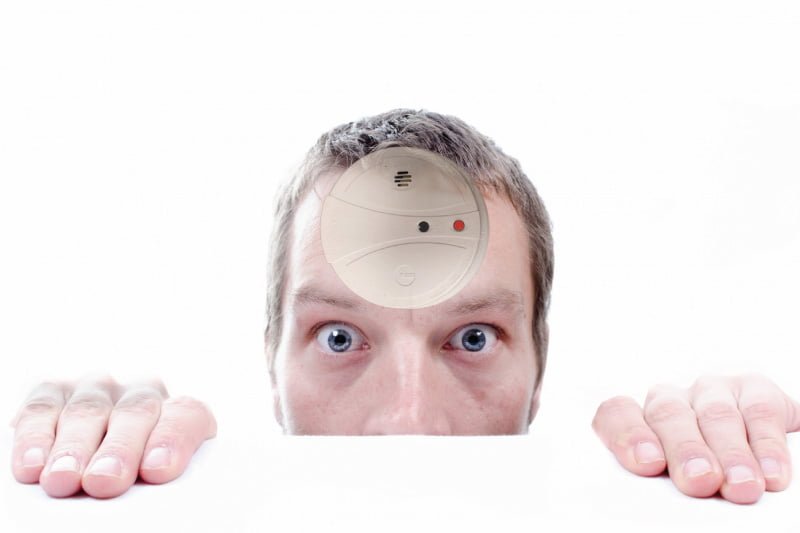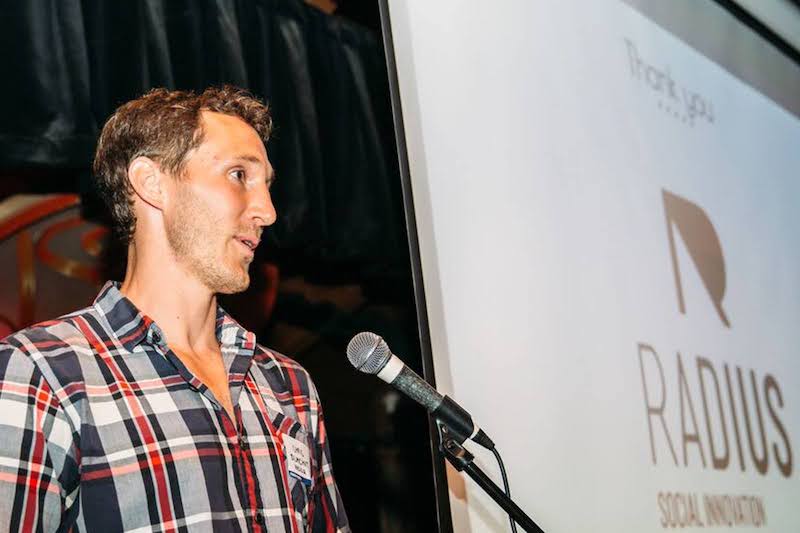While researching my post on how to find and release self-limiting beliefs like handbrakes, a question popped into to my mind:
Are some parts of our personalities fixed?
Whoosh. Like shaking a Coke bottle and twisting it open, more sticky questions spurted forth:
- How do you measure personality?
- What does each personality trait mean?
- What’s my personality?
- Are some personalities better than others?
- Do people’s personalities change over time?
- Can parents influence their kids’ personality?
- Can you change your own personality?
- Can’t you behave outside of you personality?
- If you don’t like your personality, what can you do about it?
Since I have an incurably curious personality (or is it curable?), I loaded my Kindle with three books on the topic:
- Personality by Daniel Nettle
- Me, Myself, and Us by Brian Little
- Blueprint by Robert Plomin
To my delight, I found just about all the answers I was looking for!
Whatever your personality, I think you’ll find this information to be interesting, surprising, and hopefully practical, too.
How do you measure personality?
By traits, not types.
Personality types are labels. They’re either or. You’re introverted (or whatever) or you aren’t. And as Paul Graham wrote,
“The more labels you have for yourself, the dumber they make you.”
Paul Graham
This throws withering shade at popular personality assessments like the Enneagram and Myers Briggs. While none of the books I read mention the Enneagram, they quickly dismantle and dismiss Myers-Briggs as unscientific and unreliable.
Personality traits, on the other hand, are scores along a scale. And they’re averages—like the weather.
Imagine you’re LA and I’m Vancouver.

There will be days that you’re colder and drearier than me, but on average, I’m way colder and drearier than you.
Psychologists’ go-to model for personality is the Five Factor Model of the Big Five traits:
People most commonly use the OCEAN acronym to refer to these traits. But since I’m Canadian, I favor CANOE.
These five factors are broad, but super sturdy and scientifically sound. As personality pioneers Paul Costa and Robert McCrae put it, they’re the “Christmas tree” on which all finer findings from personality research (and facets from the table below) can be arranged.
What do each of the CANOE personality traits mean?
Conscientiousness
Conscientiousness is your brain’s frontal lobe’s reactivity to being given goals or rules.
High scorers in conscientiousness are disciplined, organized, and self-controlled.
Low scorers are impulsive, spontaneous, weak-willed and have addictive personalities.
Basically, I see conscientiousness as the relative strength of the devil and angel on your shoulders:

Agreeableness
Agreeableness is how much other people’s mental states factor into your behavior, which is largely determined by the level of activation of your brain’s default mode network.
High scorers “mentalize” (think from others’ perspectives) and empathize (feel from others’ perspectives) strongly. They volunteer more, have more harmonious relationships, rarely fall out with or insult people, and are quick to forgive.
Low scorers aren’t necessarily bad people. They’re just not interested in others. But the further someone dips down the disagreeableness scale, the closer they approach the cold-hearted, non-compliant extreme of psychopathy.
“One of the most robust sex differences in personality research,” writes Daniel Nettle, is that women tend to be more agreeable than men. The average man scores lower than 70 percent of women in agreeableness.

Neuroticism
Neuroticism is your brain’s responsiveness to negative emotions like fear, anxiety, shame, guilt, disgust, and sadness. This is tied to sensitivity, size, and density of your amygdala.
High scorers have low self-esteem, are unsure of who they are, and frequently suffer from insomnia, anxiety disorders, stress-related problems, and depression.
Low scorers are self-confident, handle stress well, and take unfortunate events in stride.
Nettle likens neuroticism to the sensitivity of a smoke detector. Having super jumpy sensor is a nuisance most of the time, but at least you’re less likely to burn to death.
And Brian Little writes that neuroticism “can be thought of as an amplifier of other dispositions.” For example, if you’re highly conscientious and neurotic, you may be prone to obsessive compulsiveness.
Openness to Experience
Openness, is how broadly and loosely your brain thinks. According to Nettle, it’s the “the most mysterious and difficult to pin down of the five [personality traits].”
High scorers have a “restless unconventionality,” are spiritual, use lots of metaphors, are susceptible to hypnosis, have artistic and cultural interests, prefer exotic tastes and smells, and tend to wear floppy hats and berets.
Low scorers have narrower ranges of interest, are more traditional, focused, practical, and prefer to stick to routine.

Extraversion
Extraversion is your brain’s sensitivity to positive emotions.
High scorers enjoy receiving social attention and gaining status; like active sports, travel, and novelty; chase relentlessly after rewards and opportunities; and have way more sex.
Low scorers, introverts, are “aloof from the rewards of the world” and spend hours and hours sitting at home in their sweatpants writing blog posts.
In some sense, extraversion is the flip side to neuroticism, i.e., your brain’s sensitivity to negative emotions. But studies find that extraversion and neuroticism aren’t correlated. The opposite extreme to high extraversion isn’t expressed by negative emotion but the absence of joy or excitement.
Learning about extraversion/introversion challenged quite a few preconceptions I had. For instance:
- Introverted people aren’t necessarily shy. Shyness is tied to neuroticism. Introverts just don’t get as much out of social activity, so can do without it.
- Extraversion has nothing to do with ability to maintain good social relationships. Extraverts only have more friends on average because they like going to parties and other social activities more. They’re also more likely to get divorced.
CANOE Personality Traits and Facets
| Conscientiousness vs. lack of direction | Competence (efficient) Order (organized) Dutifulness (not careless) Achievement striving (thorough) Self-discipline (not lazy) Deliberation (not impulsive) |
| Agreeableness vs. antagonism | Trust (forgiving) Straightforwardness (not demanding) Altruism (warm) Compliance (not stubborn) Modesty (not show-off) Tender-mindedness (sympathetic) |
| Neuroticism vs. emotional stability | Anxiety (tense) Angry hostility (irritable) Depression (not contented) Self-consciousness (shy) Impulsiveness (moody) Vulnerability (not self-confident) |
| Openness vs. closedness to experience | Ideas (curious) Fantasy (imaginative) Aesthetics (artistic) Actions (wide interests) Feelings (excitable) Values (unconventional) |
| Extraversion vs. introversion | Gregariousness (sociable) Assertiveness (forceful) Activity (energetic) Excitement-seeking (adventurous) Positive emotions (enthusiastic) Warmth (outgoing) |

What’s my personality?
With the previous descriptions, you probably already have a pretty good idea of how high or low you score on each of the Big Five traits.
But if you want to double-check and drill down, there are plenty of tests you can take.
And good news: These self-reported quizzes turn out to be quite accurate. “People’s scores are extremely consistent when measured over time,” writes Nettle.
The gold standard personality test is Costa and McCrae’s NEO PI-R. But it costs $98. Not enough people read this site for me to afford it, so I turned elsewhere.
Nettle recommends two quick tests:
Here’s a quick look at the NPA, with my results as an example:
Newcastle Personality Assessor
| Very Unlikely | Moderately Unlikely | Neither likely nor unlikely | Moderately likely | Very Likely | Score | |
|---|---|---|---|---|---|---|
| 1. Start a conversation with a stranger | x1Partly because I’m married to Kim, whose favorite pastime and blog, Feed My Friends, is all about hosting. | 2 | ||||
| 2. Make sure others are comfortable and happy | x | 3 | ||||
| 3. Use difficult words | x | 3 | ||||
| 4. Prepare for things in advance | x | 4 | ||||
| 5. Feel blue or depressed | x | 1 | ||||
| 6. Plan parties or social events | x | 2 | ||||
| 7. Insult people | x | 5 | ||||
| 8. Think about philosophical or social questions | x | 5 | ||||
| 9. Let things get into a mess | x | 5 | ||||
| 10. Feel stressed or worried | x | 1 |
Results:
- Conscientiousness = Q4 +Q9 = 9
- Agreeableness = Q2 + Q7 = 8
- Neuroticism = Q5 + Q10 = 2
- Openness = Q3 + Q8 = 8
- Extraversion = Q1 + Q6 = 4
Interpretation:
Scores of 2, 3 and 4 are low, 5 and 6 are low-medium, 7 and 8 are medium-high, and 9 and 10 are high.
Another, more lengthy self assessment I found online is the 44-question Big Five Inventory developed by John and Srivastava.
As it turns out, my results from it are closely in line with those from the NPA:


Are some personalities better than others?
In Personality, Nettle goes to great length explaining the evolutionary advantages of being high or low on each of the CANOE personality traits.
But if you’re reading this, you’re more of a one-click-shopper than a hunter-gatherer. So, in today’s world, it’s likely you’d be better off as more contentious, agreeable, open to experience and extraverted, and less neurotic.
For one, studies find you’ll probably live a longer, healthier life.
Happier, too. Especially with regards to minimizing neuroticism. Researches have calculated that a small decrease in it would be worth $314,000.
But if you want to be a successful CEO, being too agreeable may hold you back. Our institutions are generally led by disagreeable people, i.e., those with psychopathic tendencies.
In any case, you don’t want to too much or too little of any trait. “At the extremes,” writes Nettle, “personality dimensions always become pathological.”

Do people’s personalities change over time?
Yes.
Returning to the analogy comparing personality to the weather in Vancouver compared to LA, our traits change like global warming:
We all tend to get warmer (more agreeable) as the years go by. We also get more conscientious and less open, neurotic, and extraverted.
But where we stand relative to each other remains remarkably stable.
Can parents influence their kids’ personality?
Parents influence about 50 percent of their kids’ personality.
But it’s entirely genetic.
Entirely.
The other 50 percent of influences on personality are environmental ones completely out of parents’ control. So discipline, diet, philosophy, role modelling, private school or whatever you can think of won’t make your kid more conscientious or agreeable.
This means you can’t blame Daddy issues for your personality problems, either.
How can psychologists be so sure that parenting doesn’t change personality?
Here’s one example:
Adopted siblings from different biological parents have zero correlation in personality. But siblings born to the same biological parents and raised apart have 50 percent similar personalities.
Robert Plomin puts this into perspective in Blueprint:
“The astonishing implication from this research is that we would be just as similar to our parents and our siblings even if we had been adopted apart at birth and reared in different families.”
– Robert Plomin
Nettle declares this as “probably the most important discovery in psychology in recent decades.”
Can you change your own personality?
In the long-run, not really.
Actually, in the long-run you grow more and more into your genes. “To some extent,” writes (warns?) Plomin, “this means we become more like our parents as we age.”
One way psychologists have come to conclude this is by observing that older twins raised apart are more similar in personality than younger ones.
As for resisting your genetic destiny, Atlantic writer Olga Khazan’s entertaining account of attempted personality change encapsulates the conclusions from all the the books and studies on personality that I read.
Khazan went on a three-month quest to become less neurotic and more agreeable and extraverted. For guidance, she consulted with SMU’s Nathan Hudson. Hudson has found that some intervention can make lead to minor volitional personality changes. And that’s what Khazan ultimately achieved: She became slightly less neurotic and more extraverted. But, counter to her efforts, she also became less agreeable.
And these are all short-run ripples unlikely to counter genetic tides.
So returning once more to my earlier analogy, as Mark Twain once remarked, “Everybody talks about the weather, but nobody does anything about it.” Because nobody can.

Can’t you behave outside of you personality?
Yes.
Brian Little writes of three layers of “natural” behavior.
The first, biogenic, is what we’ve been looking at so far. It’s the way our brains are wired by genetics.
Then there’s the sociogenic layer of cultural codes, norms, and expectations. Kind of like how McDonalds is more or less the same all over the world, but not exactly, you’d behave slightly differently if you were raised in Japan or North Korea.
And the third layer is idiogenic. It’s what you do.
As author Will Storr describes it,
“We have a core personality, mediated by culture and early life experience, which is relatively stable. But that core is a pole around which we’re constantly, elastically moving.”
– Will Storr, The Science of Storytelling
The electrons bouncing around your nucleus (n-you-cleus?) are what Little calls “personal projects.”
Little finds that people are typically pursuing fifteen personal projects at any given time. They can be anything from “teach myself to like black licorice” to “save enough to afford a boob job” to “see if I can’t be less unsocial.”
Personal projects have the power to override the personality you’re wired with.
On the downside, stretching yourself too far, too long can lead to stress-induced health issues. So someone who is highly introverted and neurotic should probably avoid working as a door-to-door vacuum salesman.
Plomin uses sums this up with a quote:
“If at first you don’t succeed, try, try again. Then quit. There’s no use being a damn fool about it.”
– W.C. Fields
But personal projects have an upside, too:
A carefully-curated personal project portfolio can expand you and your life beyond the limits of your core personality.
“Heritability describes what is but does not predict what could be,” encourages Plomin.

If you don’t like your personality, what can you do about it?
Nurture your nature.
As Plomin posits, “It just seems more sensible, when possible, to go with the genetic flow rather than trying to swim upstream.” And “Rather than striving for an ideal self that sits on an impossibly tall pedestal, it might be worth trying to look for your genetic self and to feel comfortable in your own skin.”
Step 1: Understand your personality.
Start by taking one of the tests above and reading more about the Big Five to understand them.
Step 2: Find ways to cope with your negative traits.
For instance, if you’re on the neurotic side of the spectrum, exercise, medication, meditation, or therapy can help. They won’t reduce your neuroticism, but they’ll allow you to better deal with the problems it causes.
Step 3: Find ways to make the most of what you’ve got.
“You don’t have to change yourself. You just have to change your self’s outlets.”
Daniel Nettle
Look for alternative, less destructive, ways to freely express your personality traits. “The dispositions you have are a resource to be drawn on, not a curse to be wished away.”
So, for wherever you want to go in life, look for niches where your peculiar personality trait profile works for you, not against you.
Conclusion: What’s my plan?
All this I’ve learned about personality hasn’t changed my definition of “winning at life,” but it has shifted my strategy.
I need to be honest with myself about what parts of my personality are deeply ingrained, as opposed to what identities I can change.
Then, rather than painstakingly cover up my personality traits, I will start asking myself:
Where can I redirect my efforts in ways where my traits don’t hold me back? Better yet, where can my weirdness thrive?
And as a parent, I’ll try my best to help Zac do the same and stop wasting my energy trying to mould his personality.
Rather than feel doomed by destiny, I find this to be highly encouraging. As Nettle writes:
“Now more than ever, then, it should be possible to find a niche where the traits you have actually give you an edge.” I wholeheartedly agree.
Daniel Nettle
As for what I’ll do differently to streamline my CANOE and take it on the greatest journey possible, I’m still thinking about it.
Stay tuned.
Meanwhile, it might be worth thinking about the same for yourself.
Dive Deeper Into Your CANOE Personality Profile
Personality: What makes you the way you are by Daniel Nettle
Blueprint: How DNA Makes Us Who We Are by Robert Plomin
About the author
👋 I'm Chris. Everything you read on TheZag.com is my fault. This site is like a gym for your comfort zone, full of challenges to make your status quo sexier. Join my 'Consider This' newsletter for a fun new challenge every 10 days. Try it!








Leave a Comment